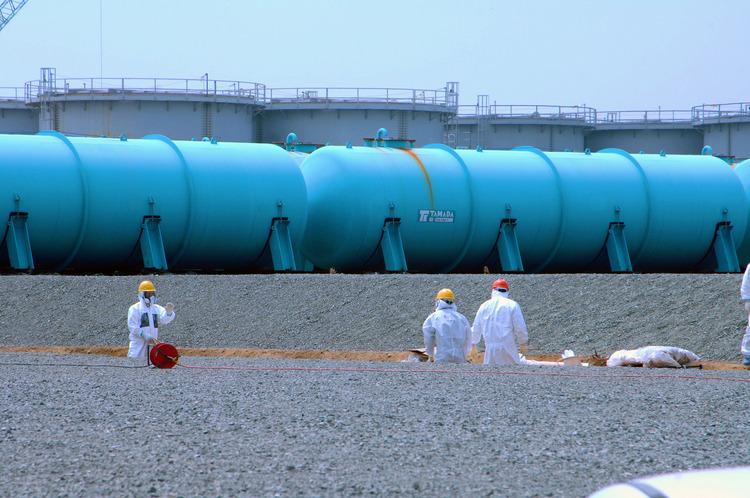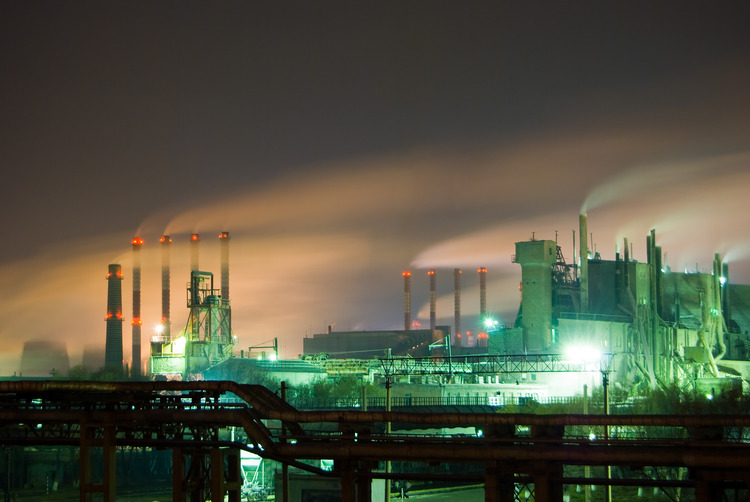
Japan will start releasing treated radioactive water from Fukushima into the Pacific Ocean amid mounting protests across Asia.
Words by Charlotte Hall
Japan is moving ahead with plans to dispose of 1.34 million metric tonnes of contaminated water collected from the Daiichi plant since it was destroyed by the 2011 earthquake and tsunami.
The water, which is filtered of radioactive material and diluted in a process known as ALPS, will be discharged into the Pacific Ocean over 30 years.
Authorities gave the order on Tuesday for the plant’s operator, Tepco, to prepare the first release of 7,800 cubic metres over 17 days, starting on 24 August.
The move comes in answer to a long-term concern for the Japanese government about nuclear waste disposal. Since the natural disasters of March 2011, water has been continuously pumped around the nuclear plant’s damaged reactors to keep them cool and avoid further radiation. The contaminated water has been collected and stored in barrels on site for over a decade, but Tepco has now run out of space for further storage.
Though the plan received approval from the UN watchdog International Atomic Energy Agency last month after a two-year review period, it has faced heavy backlash both from the Japanese public and from neighbouring countries.

Public protests gathered in Tokyo, Seoul and Hong Kong are largely concerned about trace radioactive elements remaining in the water and the impact on the local fishing industry.
The ALPS process filters out 62 types of radioactive materials, but it fails to filter out Tritium, a radioactive isotope of hydrogen which can increase the risk of cancer if consumed in large quantities. Because Tritium can be absorbed by ocean flora and fauna, members of the public and a number of Asian authorities have raised the alarm about potential contaminations of food sources.
China introduced radiation testing on all Japanese seafood imports in July, while Hong Kong has threatened a ban on seafood, seaweed and sea salt imports from ten Japanese prefectures if the release goes ahead tomorrow.
Meanwhile, South Korea’s government has officially supported the plans. But the opposition leader Lee Jae-myung called the plan an act of ‘terror’ during a party meeting.
Japan tried to assuage these concerns, noting that Tritium levels would be seven times lower than the maximum radiation levels defined by the World Health Organisation. “In other words, tritium levels in the treated and diluted water will be below those considered safe for drinking,” a spokesperson wrote, answering a series of inquiries by inquiries from Russia and China.
Members of the scientific community have also questioned the backlash. Prof Jim Smith, Professor of Environmental Science at the University of Portsmouth, pointed out that this kind of discharge is not unprecedented. He told SMC: ‘Nuclear sites all over the world – including the UK, US, China and South Korea, discharge diluted wastewater to seas, rivers and lakes. This has been going on for decades without significant impacts. The risk is really very low.’
While the plan meets current regulatory and scientific standards, one concern pointed out by Greenpeace Japan’s Hisayo Takada, is that the volume of contaminated water will continue to grow as the reactor’s temperature is maintained. ‘The Japanese government has opted for a false solution – decades of deliberate radioactive pollution of the marine environment – during a time when the world’s oceans are already facing immense stress and pressures,”’Takado said in a Greenpeace statement. He noted the Japanese government’s intentions to expand nuclear power, despite “the flaws in the current decomissioning plan, and the ongoing nuclear crisis”.
Associate professor Tony Hooker, director of radiation research at the University of Adelaide also said: ‘There is a growing question regarding the sea as a dumping ground. Dillution is no longer the solution to pollution. While the Japanese may dispose of their wastewater in the interim, it would be a good opportunity to look at other disposal methodologies in the future.’




